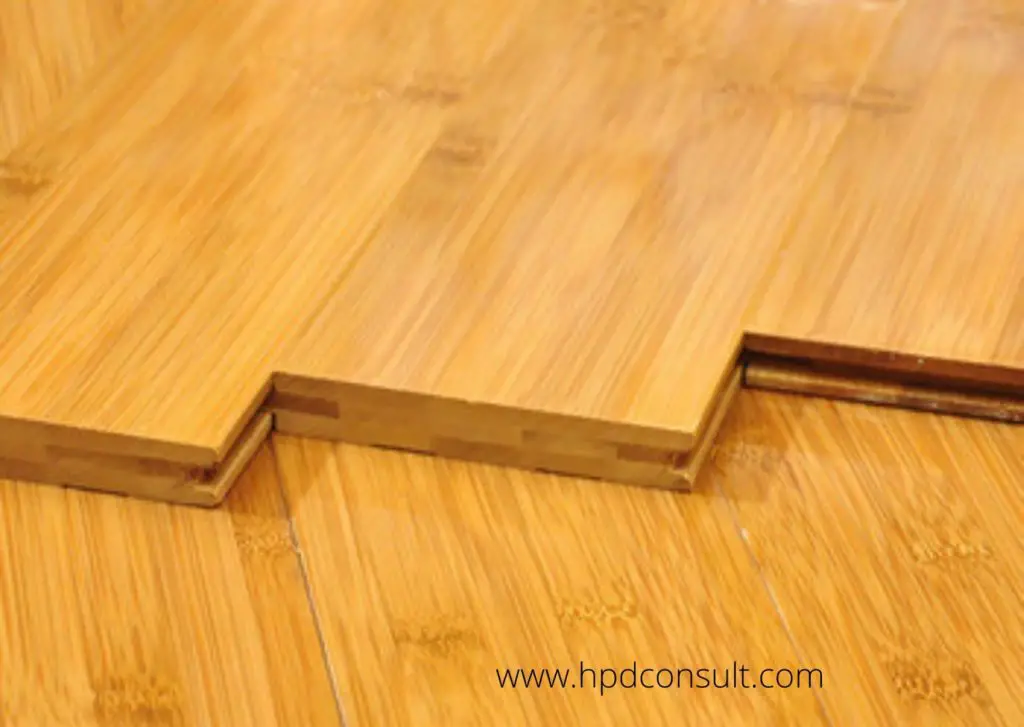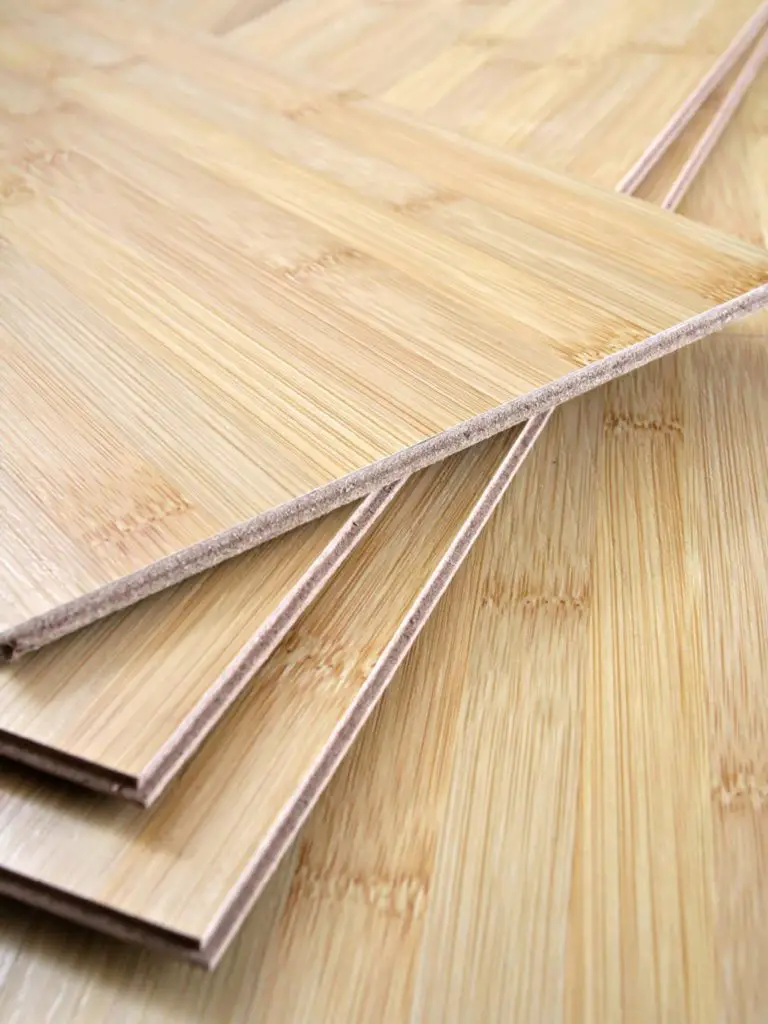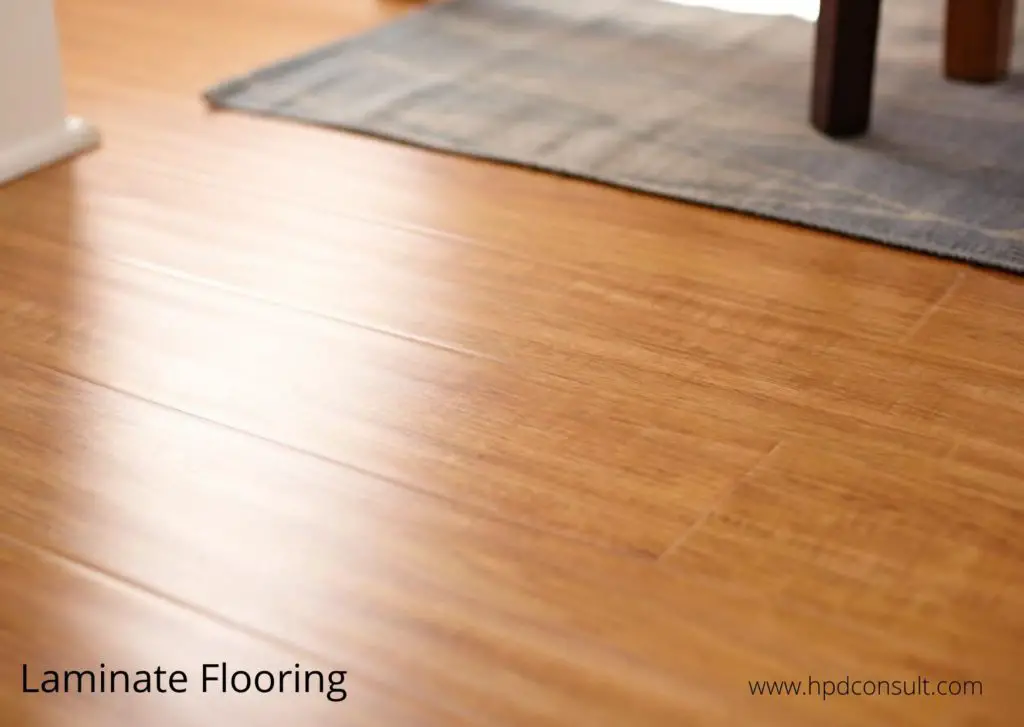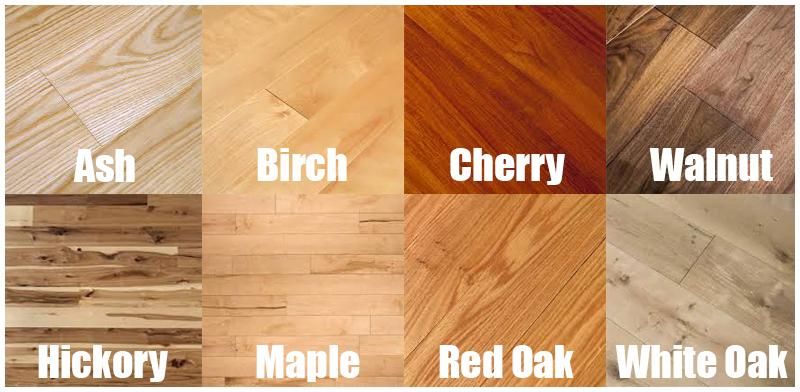13 Top Advantages & Disadvantages of Bamboo Flooring | Cost of Bamboo Floor Vs Engineered Hardwood
What is Bamboo Flooring? | Advantages and disadvantages of Bamboo Flooring | Bamboo Flooring Problems | Bamboo Flooring Cost/Prices | Benefits of Bamboo Flooring
What is Bamboo Flooring
Bamboo flooring is a type of hardwood floor manufactured from the bamboo plant and is classified as a form of sustainable flooring as they reduce the demand on ecosystems during their life-cycle. Bamboo flooring is made from a fast-growing renewable “timber” (bamboo is actually a grass).
Bamboo flooring is made from the bamboo plant, a plant that’s quickly becoming an environmentally friendly flooring option for consumers. Unlike some other types of flooring, bamboo is a natural plant, making it a green flooring option.
It’s now available in a range of styles and colors, with installation options including floating, glue down, and laminate.
Bamboo flooring is a type of hardwood flooring that is made from the strong, durable bamboo plant. It is a sustainable, strong, and environmentally-friendly alternative to traditional hardwood flooring.
There are a number of important factors to consider when considering bamboo flooring for your own home or office.
First, bamboo flooring is one of the most sustainable resources in the world-it is created by fast-growing, renewable bamboo plants.
💥🎁 Christmas & Year-End Deals On Amazon !
Don't miss out on the best discounts and top-rated products available right now!
🛒 Shop Now and Save Big Today!*As an Amazon Associate, I earn from qualifying purchases.
Bamboo plants grow faster than other types of hardwoods, and the floors are resistant to moisture, termites, and other pests.
One of the great things about bamboo floors is the installation process. It is easy to install yourself-all you need is a sharp utility knife and a straight edge to score the bamboo board before snapping it apart.
For more complex installations, there are many professional installers who specialize in bamboo floors.
Bamboo flooring is a newer product, however, so not all building codes recognize its use as flooring. It does not need to be installed as expertly as hardwood floors or have additional required fire protection like other materials.
Bamboo Floor Vs Engineered Hardwood
Bamboo, on average, has a lifespan of about 25 years before it begins to deteriorate. Bamboo is frequently used in high-traffic commercial settings; therefore, it is possible that it will be used longer in your home. Bamboo’s hardness makes scratching or denting difficult, but not impossible.
The thickness of the layers, like with engineered hardwood, determines whether it can be refinished and how many times it can be refinished. However, bamboo floors do not last as long as engineered hardwood floors.
💥🎁 Christmas & Year-End Deals On Amazon !
Don't miss out on the best discounts and top-rated products available right now!
🛒 Shop Now and Save Big Today!*As an Amazon Associate, I earn from qualifying purchases.
Engineered hardwood is designed to last longer than solid hardwood. Its plywood base layer provides some scratch and dent resistance, but the top layer is still solid wood. This means that it may be sanded down and polished as it ages, giving it a new look.
A well-maintained engineered wood flooring will usually outlive bamboo
Engineered hardwood outperforms bamboo flooring in a few other ways, as well like it is less prone to become scraped or dented, and it is moisture-resistant.
Engineered hardwood and bamboo are both quite adaptable and may be used in a variety of places, from residential to commercial.
Nonetheless, engineered hardwood and bamboo have distinct properties that influence where they are best used.
Except in high-moisture and humidity environments, engineered hardwood flooring can be used in practically every location (i.e., bathrooms). In contrast to traditional wood floors, engineered wood can be used in home kitchens.
💥🎁 Christmas & Year-End Deals On Amazon !
Don't miss out on the best discounts and top-rated products available right now!
🛒 Shop Now and Save Big Today!*As an Amazon Associate, I earn from qualifying purchases.
Bamboo flooring is sometimes touted as being more moisture resistant than wood flooring and can be seen in bathrooms, particularly half-baths.
Engineered hardwood was originally intended to withstand heavy foot activity in public and commercial environments. It will resist far more damage than bamboo in high-traffic areas such as an office, lobby, or large family home.
Benefits of Bamboo Flooring
There are numerous features of bamboo, which make it a flooring preference amongst many homeowners. These include the following: It is naturally anti-bacterial, water-resistant, and extremely durable and stylish.
Bamboo flooring offers a unique look and is an affordable, eco-friendly hardwood option. Bamboo flooring also has wide colour selections in the market and are know to withstand wear and tear, is easy to maintain, and will look beautiful for a long time.
Bamboo flooring is extremely versatile. It can be installed over almost any subfloor and used in most rooms in your home. Bamboo is dimensionally stable, meaning that it can be used in rooms with fluctuating temperatures.
💥🎁 Christmas & Year-End Deals On Amazon !
Don't miss out on the best discounts and top-rated products available right now!
🛒 Shop Now and Save Big Today!*As an Amazon Associate, I earn from qualifying purchases.
Bamboo Floor cost Per Square Foot
Bamboo flooring materials range in price from $3.00 to $6.00 per square foot, not counting labor. The ultimate per square foot costs is affected by brand, quality, and quantity.
Labor costs an additional $2.00 to $7.00 per square foot. Planning, preparation of the installation place, setting up the equipment, measuring and cutting the boards, and cleaning up the area are all included in the labor rates.
In some circumstances, this includes safeguarding surrounding cabinets, baseboards, and molding. The cost of labor might vary greatly based on the contractor’s experience and the size of the flooring space.
The typical bamboo flooring installation cost is $ 7 per square foot, which includes both supplies and labor.
Advantages and Disadvantages of Bamboo Flooring
Advantages of Bamboo Flooring
• Eco-friendly and sustainable flooring option
Bamboo floor is made in the form of fast growing and renewable materials. The flooring is created by the bamboo plant, which develops faster than other types of hardwood. It is also stronger and more resistant to termites, mold, and moisture.
• Excellent for eco-conscious consumers
Bamboo flooring for many consumers is eco-friendly because it is expensive as compared to other options such as wood or vinyl tile.
💥🎁 Christmas & Year-End Deals On Amazon !
Don't miss out on the best discounts and top-rated products available right now!
🛒 Shop Now and Save Big Today!*As an Amazon Associate, I earn from qualifying purchases.
One reason that makes bamboo flooring environmentally friendly is its natural growth cycle without watering or pesticides used.
• Strand Woven bamboo is extremely tough and durable – can be used in commercial areas
Bamboo flooring is a strong and durable natural material that is very environmentally friendly. The aged bamboo strands are the strongest type of flooring that can be used in commercial areas.
• Pre-built bamboo stands for easy installation
You will enjoy the convenience of installing bamboo floors on your own with pre-made stands and tracks. You do not need professional installation services for this brand. It is highly recommended as it saves money in the end.
• Can be used in versatile ways (in conservatories, with underfloor heating)
Bamboo flooring is strong and durable, it can be used in various ways such as for covering walkways, kitchen floors, or in conservatories. It is ideal for this purpose because it is lightweight and can be moved with ease.
• Easy to clean
This type of bamboo flooring is very easy to clean because you can remove the dust without a lot of hassle. You will not need any mop or broom to clean it up as it does not contain dust or dirt.
• Either float over an underlay of fix to the subfloor
If you decide to install bamboo flooring on your own, you can choose to float it over an underlay of tiles or fibre (in the case of gluing the floor).
💥🎁 Christmas & Year-End Deals On Amazon !
Don't miss out on the best discounts and top-rated products available right now!
🛒 Shop Now and Save Big Today!*As an Amazon Associate, I earn from qualifying purchases.
• Available in different colours, styles, finishes, and sizes
Bamboo flooring comes in a wide range of colours, styles, finishes, and sizes. You can choose the best one for your house or office.
• Matching bamboo flooring accessories to complement your floor
You can choose the accessories that match your house design with bamboo flooring. It will make your house more beautiful and functional.
• Appeal to consumers who prefer eco-friendly floors
There are hundreds of options of bamboo flooring available in stores for you to choose from. Hence, it is able to convince a lot of people about its eco-friendliness.
• Hygienic and great for allergic people
This type of flooring is great for people who are allergic to dust and mites, because bamboo is not a problem. It also protects your house from mite and insect infestation.
• Easy installation
The easier and simpler the installation process of the product, the more likely it will convince consumer to consider it. Bamboo flooring installation is relatively simple compared to other types of floors like plywood or laminate as it can be accurately installed by anyone.
Disadvantages of Bamboo Flooring
• Vulnerable to water
One disadvantage of bamboo flooring is that it is vulnerable to moisture and water. Hence, you should not place heavy or sharp objects or open water bottles on the floor and ensure there are no sources of dripping water.
💥🎁 Christmas & Year-End Deals On Amazon !
Don't miss out on the best discounts and top-rated products available right now!
🛒 Shop Now and Save Big Today!*As an Amazon Associate, I earn from qualifying purchases.
Cannot be used in bathrooms or rooms with excessive water
• It may warp with age
Another disadvantage of bamboo flooring is that it may warp with time due to changes in temperature. If you want your floor to have a long life as possible, you should ensure there are no signs of moisture on it.
Bamboo flooring can warp when exposed to heat or strong sunlight of the sun. This makes it less attractive and ideal for any room in your home.
• Not very attractive
A third disadvantage of bamboo flooring is that it has a distinct, different look from other common materials used to make floors like hardwood, cork, or laminate. Because of this, many people prefer not to invest in this type of floor.
• The surface can scratch if objects are dragged across it
Bamboo is not a hard wood and therefore it can be damaged if you are force to drag something across the surface. It can scratch easily and is recommended to remove sharp objects from it.
• It is expensive
Bamboo flooring does not come cheap as other types of floors. Because of this, many people do not want to buy it because of the extra cost involved in installation process and maintenance as well as its tendency to scratch and warp with time.
💥🎁 Christmas & Year-End Deals On Amazon !
Don't miss out on the best discounts and top-rated products available right now!
🛒 Shop Now and Save Big Today!*As an Amazon Associate, I earn from qualifying purchases.
• Not ideal for kitchens and bathrooms
If you decide to install bamboo flooring in your kitchen and bathroom, it is not a good idea because it is susceptible to moisture. It can also be damaged easily when there are water leaks in the house.
• Less attractive to consumers
This type of flooring is not popular with most people. Because of this, many people consider it as an inferior option compared to hardwood or laminate flooring.
Bamboo Flooring Problems
Bamboo has many benefits, but there are also some major problems with it. One of the most common is that bamboo flooring isn’t as durable as other types and can be vulnerable to water damage. It has high porosity as compared to engineered hardwood floor.
Bamboo flooring is a sustainable and eco-friendly product, but it does not come without its problems. Some other most common issues with bamboo flooring include;
Bamboo wood has a low density that makes it susceptible to scratches from heavy furniture or other abrasive surfaces in your home.
This can lead to unsightly gouges that are noticeable against the light-toned color of bamboo.
💥🎁 Christmas & Year-End Deals On Amazon !
Don't miss out on the best discounts and top-rated products available right now!
🛒 Shop Now and Save Big Today!*As an Amazon Associate, I earn from qualifying purchases.
The glue used for installation also contributes to scratches as this material provides little protection for the hardwood underneath.
Installation Process Can Lead to Problems. Installing bamboo flooring can be difficult due to the lack of uniformity between pieces or difficulties cutting the bamboo planks.
Top Consideration for Selecting the Right Flooring
The challenge of choosing the right type of flooring is often faced by many homeowners and project engineers and designers. With many factors to consider depending on the purpose of the project, each floor type has its own advantages and disadvantages.
There are many types of flooring including common ones like tiles others such as Laminate flooring, Bamboo Flooring, Hardwood Engineered Flooring, Epoxy Flooring, Industrial flooring, and many other flooring solutions.
Irrespective of the type of floor, here are key factors to consider when selecting the floor type:
Purpose of the Floor
The intended use of the space is an important consideration when selecting flooring type. Certain rooms in the house will see more activity. Consider the anticipated use of the room when making a selection.
💥🎁 Christmas & Year-End Deals On Amazon !
Don't miss out on the best discounts and top-rated products available right now!
🛒 Shop Now and Save Big Today!*As an Amazon Associate, I earn from qualifying purchases.
An area where children frequently play on the ground might work best with carpet flooring, while a dining room might require something more formal, such as hardwood flooring.
Available Budget for the Floor
While it’s always advisable to choose a flooring system that’s fit for purpose rather than by cost, your available budget will rightly play a part in selecting a type of floor. It’s important to note that the price of any floor includes more than just the cost of materials and installation.
Over time, you need to account for cleaning and maintenance costs, as well as the cost of repairing any damage and even replacing the floor in the future.
Maintenance Requirements of the Floor
A flexible floor finish can be important to minimize damage from small scratches, such as from high heels or dropped utensils. Moisture-resistant finishes can help prevent damage or moisture ingress that could cause mold and mildew.
Are you willing to polish and seal stone tiles every few years, or refinish your natural hardwood flooring at least once a decade? The tile needs regular cleaning and a deep scrubbing to clear the grout after a few months of daily use, but it requires a lot less attention than carpet. Make sure you can commit to the maintenance required by the flooring you choose.Colour is an important consideration for floors when it comes to cleaning, maintenance, light, and the comfortability of a space or work environment. If your space gets little natural light, light color can make it look brighter and larger, resulting in a more pleasant environment.
💥🎁 Christmas & Year-End Deals On Amazon !
Don't miss out on the best discounts and top-rated products available right now!
🛒 Shop Now and Save Big Today!*As an Amazon Associate, I earn from qualifying purchases.
Don’t settle for the same old flooring options when your floor can be a work of art. Seeking out unique colors, patterns, and materials add extra value to the project without drastically changing the price tag. Many rare hardwood varieties, artistic tile patterns, and colorful carpets are available at the same prices as their more commonplace counterparts.
Installation Ease of the Type of floor
You don’t want to wait weeks for custom cutting and careful fitting of unusual tiles or complex parquet patterns. Some installations of sheet vinyl, carpet, and locking laminate flooring can take less than a day per room.
Options for Changes
If you’re not sure what flooring to commit to right now, choose a product that is easily changed in the future. This can be due to its ability to accept stains and paint, such as solid hardwood flooring with a surface that is easy to refinish.
Overall Durability of the Floor
Finally, consider how long each type of flooring with last based on your daily usage of each room. Pairing tougher materials in the bathroom, kitchen, and entryways will allow you to enjoy your floors for a decade or longer before they begin to show their age.




